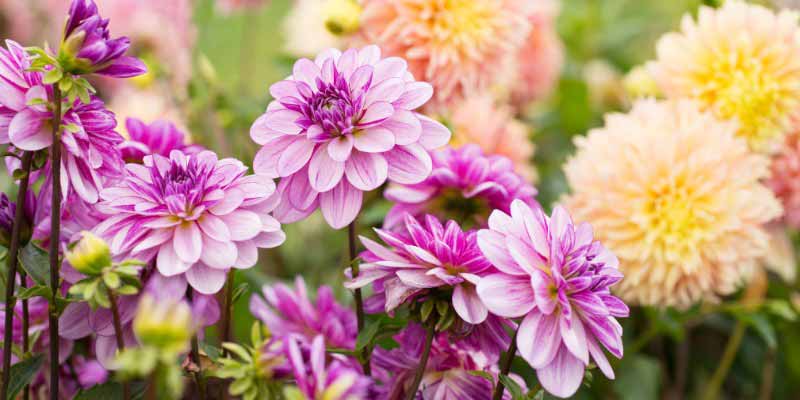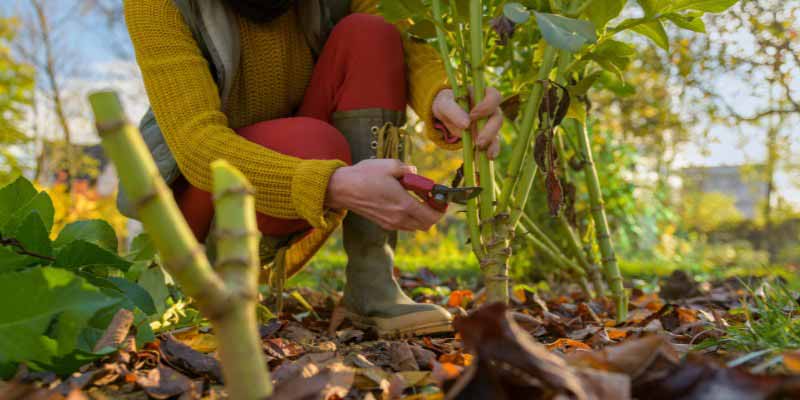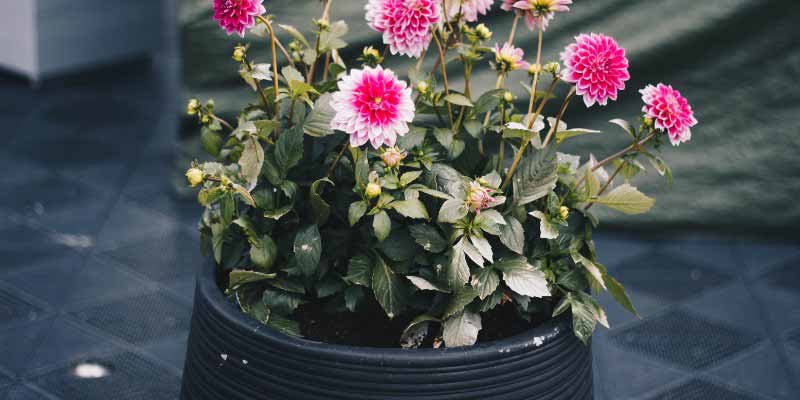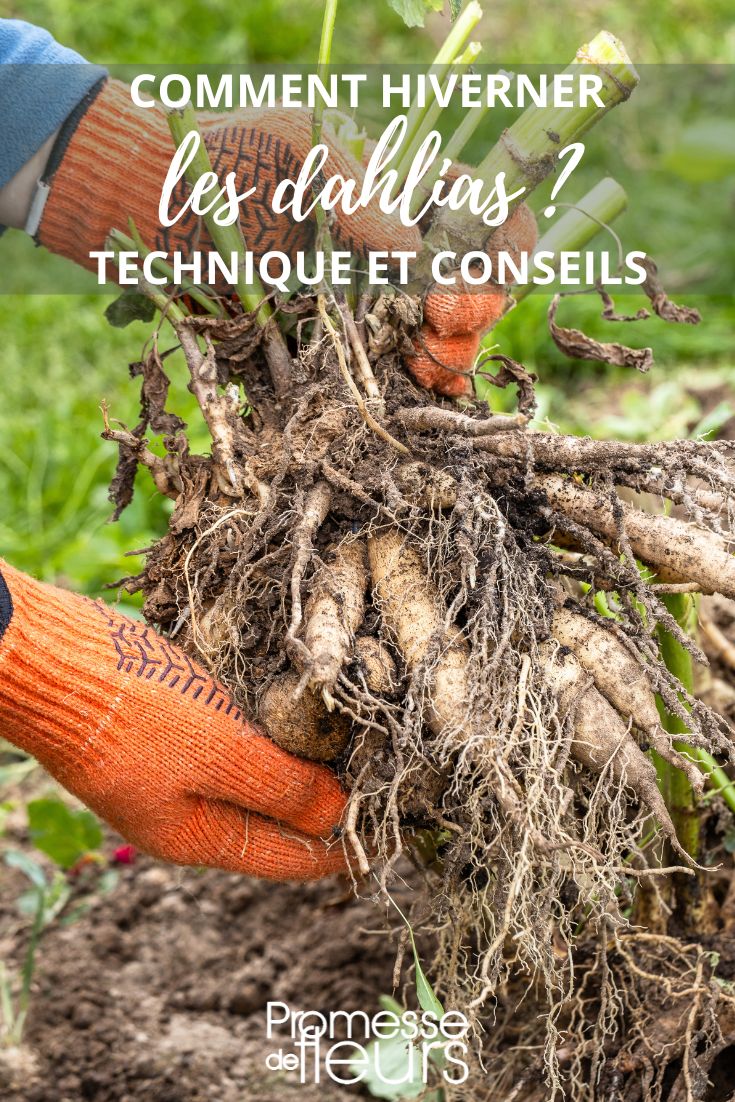Simple or extravagant, majestic or discreet, miniature or giant, Dahlias are summer-flowering bulbs that enchant with their flowers in a wide range of shapes and colours. One drawback: dahlias are frost-tender and do not tolerate frost. In regions where winter temperatures regularly fall below -5 °C, it is essential to protect them to prevent tubercles from freezing and dying. If you overwinter dahlias correctly, you can keep them from year to year and even enjoy earlier flowering the following season by potting them on before replanting. Lifting also makes it possible to divide tubercles. With a few simple steps, dahlias will spend winter safely! Discover why, when and how to overwinter them, whether planted in ground or in pots.

When to lift dahlia bulbs?
Lifting of tubercles is done late October or early November, when first frosts arrive and leaves begin to blacken. This is when the plant weakens and needs protection. Do not lift too early, as tubercles must have accumulated enough reserves to get through winter. In mild-winter regions, dahlias can remain in ground or in pots outdoors, but remember to protect well with a thick mulch and surround with insulating material (straw, dead leaves, hessian) to shield from cold.
How to keep dahlia bulbs for winter?
Required equipment:
- pruning shear
- small garden knife
- garden fork
- cardboard box or crate
- turf, dry sand or dry leaves
- labels
For dahlias planted in ground :
- As soon as foliage is blackened by frost, cut stems to about 15 cm above ground using pruning shear.

- Use a garden fork to lift tubercles gently. Take care not to damage them.

- Remove soil remaining around tubercles, but do not wash. This reduces risk of rot during overwintering.

- To find them again in spring, label each tubercle with variety name at base of stem.
- Leave them to air-dry for a few days in a cool, dry, well-ventilated place. This removes moisture and prevents rot during overwintering.
- Place tubercles in a cardboard box or crate on a layer of dry turf, dry sand or dead leaves.
- Add another layer of dry turf or dead leaves to wrap tubercles well.
- Store in a dark, well-ventilated, dry place at a temperature between 4 and 5 °C, such as a cellar, garage or frost-free loft.
- During winter, check tubercles from time to time to detect any disease or mould.
For potted dahlias:
If dahlias are grown in pots, they can also overwinter in their containers provided they are properly protected, because potted plants are more sensitive to cold, being more exposed:
- Cut spent stems to about 15 cm above ground.
- Move pots to a frost-free, sheltered, dark and well-ventilated place. Ideal temperature for overwintering in pots is between 5 and 8 °C. A dry garage or cellar will do.
- If you cannot move pots, protect by wrapping them with hessian or bubble wrap and add a layer of mulch (dead leaves, straw) on pot surface to insulate tubercles.

When to put dahlias back outside?
First of all, inspect carefully for any signs of mould, rot or desiccation. If damaged parts are found, cut them away cleanly with a disinfected tool. Wait until risk of frost has passed before replanting dahlias in garden, generally around mid-May depending on region. Prepare soil well by loosening and adding compost or fertiliser for a good start.
For those overwintered indoors, you can even bring them into growth earlier by potting up under cover before replanting in ground.
→ Also read: Planting Dahlias: 8 common mistakes to avoid and How to force Dahlias to flower earlier?
Good to know
Overwintering is also an opportunity to divide tubercles to obtain several plants. This allows multiplying Dahlias for next season and strengthens plants. Ensure each tubercle piece has at least one bud so it can regrow. Divide with a sharp knife or pruning shear, cutting tubercles into two or three pieces. Then leave sections to air-dry for 24 hours before replanting. This allows wounds to callus and reduces risk of rot.
To learn more, discover our tutorial: Multiplying Dahlias: the right techniques.
































Comments